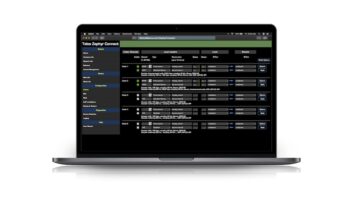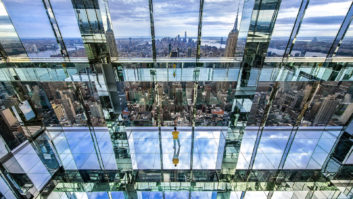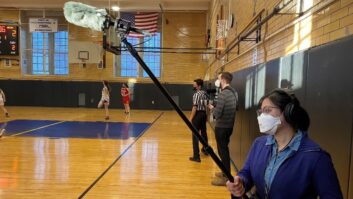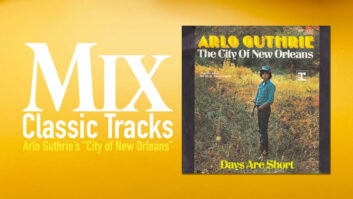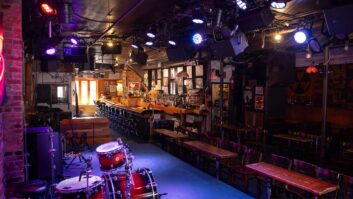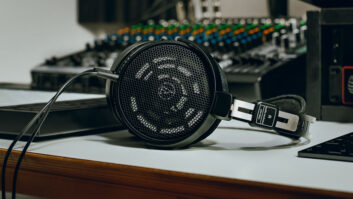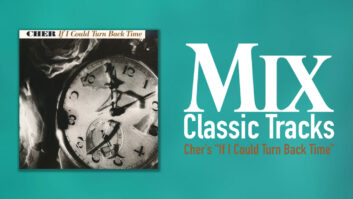Studio A’s control room at Jungle CityDuring this century and the one preceding, New York City has been a firsthand witness to the ebb and flow of the international music scene and, since the 1980s, some might say the Big Apple has served as a “canary in a coalmine” for the broader recording studio industry at large. While the last couple of decades have been tough on some of New York’s larger commercial studios, the ones that have survived—and indeed thrived— have taken it on themselves to offer something totally unique.

New York’s latest sonic gem is Jungle City Studios, located on two floors in a luxury office building in the city’s High Line district. It was designed and built at an expense of no less than $6 million and boasts 4,800 square feet of real estate amidst soaring ceilings and breathtaking views of New York City. The facility’s owner, Ann Mincieli, has been Alicia Keys’ engineer/ album coordinator and studio director for over a decade and has worked with top artists, including Coldplay, Usher and Jay-Z. Her extensive production and engineering experience has given her the opportunity to work in many of the world’s top shelf recording studios—places like Polygon Studios in Toulouse, France; ICP Studios in Belgium; Record Plant in Los Angeles; and Record Plant and The Hit Factory in New York.
Studio A’s live roomMincieli has taken the best of her experiences from these recording environments and others, and incorporated them into a facility designed to take the destination studio to a new level. “New York City is where music culture lives and breathes,” she observes. “I basically wanted to take the best attributes of other studios I’ve worked in and combine them with all the things I love about art and culture. When you do something on this scale, you have to make all the odds in your favor.”

Over the course of the project, which took approximately three years to design and build, Mincieli says that the most important decision was the location and building selection. “If I didn’t find this particular building, I wouldn’t have done it,” she observes. “Jungle City is located in a brand-new building located in a hip, up-and-coming area of New York. It has underground parking, is located next to a nice hotel and each room was enclosed in glass.”
The abundance of glass not only provided stunning, panoramic views of Manhattan throughout the facility, but according to designer John Storyk of Walters Storyk Design Group (WSDG), also provided an acoustic challenge. “We had a lot of hard surfaces to deal with, including the glass itself and, of course, the hardwood floor,” recalls Storyk. “To overcome these challenges, we covered an entire wall in Studio A—the signature room—with custom perforated wood products from Europe to give us the broadband absorption characteristics that we needed. We also used these surfaces to create an interesting architectural statement when combined with lighting.”
WSDG, assisted by project manager Joshua Morris, also helped increase the visual communication between Studio A’s control room and live room by encasing the custom Augspurger Dual 15 Vertical main speakers in a glass speaker baffle. “This is only the second time we have done this, and it created a kind of transparent ‘wall of sound’ between the live and control rooms, maximizing the overall impact of the studios’ expansive North and South picture windows.” In addition to the custom Augspurger monitors, the facility also features Genelec 1031As, Yamaha NS10Ms, ProAcs and Adams Ax7s.
If the panoramic views of New York City and remarkable acoustics weren’t enough, Jungle City is also now home to one of the most coveted recording consoles in the world: a circa 1968 EMI TGI 12345 Mark III that has been fully restored. One of only 20 ever made, the TGI 12345 is the same kind of console that inhabited Abbey Road Studios in the late ’60s and early ’70s, desks used to record such classics as Pink Floyd’s The Dark Side of the Moon. “I have always dreamed of owning an EMI console,” comments Mincieli. “It is difficult to find a single module, so the fact that I have an entire console complete with 18 mic pres, compressors, EQs and bussing is pretty amazing. You can sum and mix off it if you want to go back in time.”
Combining the best of new and vintage, the EMI console is accompanied by a 48-input SSL Duality SE console with total recall in its main control room. In addition, there are two other dedicated production suites: one centered on an Avid Pro Tools Icon D-Control, the other on a Euphonix S5 Fusion Console. As one might expect, Jungle City also has the latest software tools and a full complement of new and vintage outboard gear throughout the facility, including Neve, API and Chandler preamplifiers, Universal Audio and Tube- Tech compressors and many others.
In creating Jungle City, Storyk thinks that Mincieli has combined the best of old and new: “This studio is modern and contemporary, but still intimate and cozy. It is like a customized home studio, but inside a very modern, state-of-the-art facility.” The customized treatments are evident throughout the interior, which includes special touches like Louis Vuitton fabrics, programmable LED mood lighting, custom molding and many other items. Interior designer Beth Walters of WSDG worked closely with Mincieli to select and coordinate the fabrics, colors and other flourishes that highlight Jungle City’s interior.
“Making music is about inspiration, and people love being in touch with that,” Mincieli concludes. “I want everyone and anyone to record here. The idea is to bring the recording community back to the city. I felt like New York was kind of missing that.”
Jeff Touzeau is a regular contributor to Pro Sound News. His latest book is The Green Musician’s Guide: Sound Ideas for a Sound Planet.

